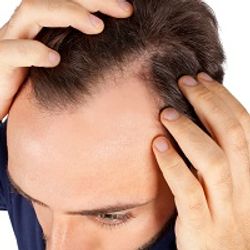
OR WAIT null SECS
Investigators Develop AI Model That Can Predict Nail Psoriasis
Investigators from the Friedrich-Alexander-University Erlangen-Nurnberg in Germany have developed a convolutional neural network that can automatically and objectively score severity of nail psoriasis with high reliability and no need for image standardization.
Given that nails are categorized as dermal appendages, psoriasis often affects them, with an estimated total of 80-90% of patients eventually presenting with nail involvement. Additionally, nail psoriasis is prevalent in roughly 50% of all psoriasis patients.2
“The clinical interest in developing AI-based tools to automatically and objectively determine disease activity parameters in psoriasis, PsA, and other forms of arthritis is rising, but the clinical applicability of these approaches has remained limited so far,” wrote Stephan Kemenes, department of dermatology, Friedrich-Alexander-University Erlangen-Nuernberg and Universitaetsklinikum Erlangen, and colleagues. “AI tools addressed at other clinical disease activity measures of PsA such as skin and nail disease are still underresearched, but there have been promising developments so far.”1
Kemenes and colleagues recruited participants through outpatient clinics of the Department of Internal Medicine 3, Rheumatology and the Department of Dermatology of the University Hospital of Erlangen between 2022 and 2023. Healthy control participants were sourced from the community, and individuals with health conditions other than cutaneous psoriasis (PsO) and psoriatic arthritis (PsA) that affected the nails were excluded.1
The cohort used to train the convolutional neural network included patients with PsO, PsA, rheumatoid arthritis, and healthy controls. The validation cohort exclusively included patients with PsO with or without nail psoriasis.1
A total of 638 patients were included, providing 5357 total nail images. These images were collected in three stages; the first two stages were used to train the model and the third was used for validation. The first stage of the trial included 177 patients with 1770 images, the second involved 283 with 2630 images, and the third included 118 with 929 images. Images were also independently scored by a group of five physicians based on the modified Nail Psoriasis Severity Index (mNAPSI) before the images were fed into the AI model.1
In the first stage, the physicians scored 1227 images “good” in diagnosability, while 412 were marked “acceptable” and 138 were not evaluable due to poor image quality. The second stage saw 1883 images scored good, 366 as acceptable and 374 as not diagnosable. The third stage saw 391 images scored good, 433 as acceptable, and 105 as not diagnosable.1
When fed into the network, investigators noted a high correlation of .94 (P <.001) between human and AI mNAPSI scoring. Additionally, the least-squares fit analyses produced a slope of .95 and an intersection of -.54, indicating a very high predictive capability for mNAPSI. The third stage, validation, also saw a high correlation between human and AI with r = .92 (P <.001).1
In the first two groups, the convolutional neural network exhibited a mean area under the receiver operating characteristics curve (AUROC) of 86% +/- 7% across mNAPSI classes. The validation set also indicated high classification performance, with a mean AUROC of 80% +/- 9%, despite imaging condition variability.1
The team points out that, despite the appearance of the network’s total success, certain limitations must be accounted for. Intermediate mNAPSI severity classes were often mistaken compared to the extreme ends of the spectrum. The network was also untested on other nail pathologies, which may result in false positives if something other than psoriasis is causing the nail changes. Additionally, all patients in the study were Caucasian, suggesting the possibility that the model may be less successful in analyzing patients with darker skin tones.1
To that end, investigators invite further testing of their convolutional neural network to account for these limitations.
“If successfully developed, our approach can be translated into clinical practice and has the potential to be implemented in app-based self-reporting tools,” Kemenes and colleagues wrote. “To facilitate the diffusion of our [network], we will make its architecture available on request.”1
References
Kemenes S, Chang L, Schlereth M, et al. Advancement and independent validation of a deep learning-based tool for automated scoring of nail psoriasis severity using the modified nail psoriasis severity index. Frontiers in Medicine. 2025;12. doi:10.3389/fmed.2025.1574413
Schons KR, Knob CF, Murussi N, Beber AA, Neumaier W, Monticielo OA. Nail psoriasis: a review of the literature. An Bras Dermatol. 2014;89(2):312-317. doi:10.1590/abd1806-4841.20142633


